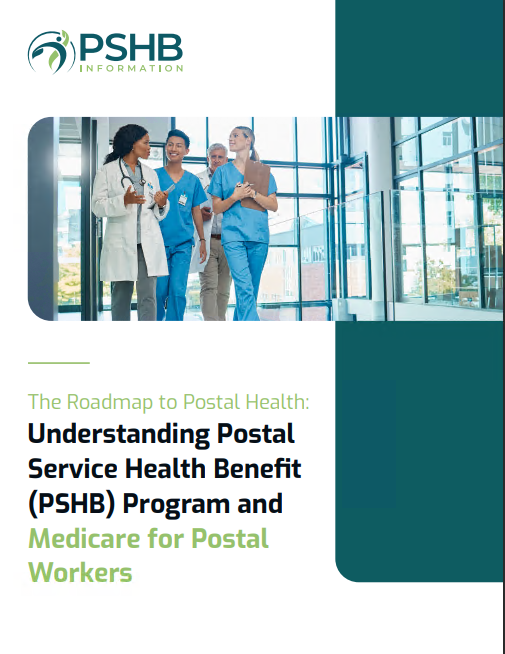Key Takeaways:
-
Medicare Supplement plans, or Medigap, help cover gaps in Original Medicare, such as deductibles, coinsurance, and copayments.
-
These plans provide flexibility and peace of mind by reducing unexpected healthcare expenses for seniors.
Why Medicare Alone May Not Be Enough
As a United States Postal Service (USPS) worker or retiree, you likely understand the importance of planning for healthcare expenses in retirement. While Medicare is a vital program that covers many healthcare costs, it doesn’t cover everything. For example, you’ll face out-of-pocket expenses like deductibles, coinsurance, and copayments, which can quickly add up, especially for those with ongoing medical needs.
Medicare Part A, which covers hospital stays, includes deductibles and coinsurance that you’re responsible for after certain periods. Similarly, Medicare Part B covers outpatient services but requires a monthly premium, along with a deductible and 20% coinsurance for most services. Without additional coverage, these costs could put a strain on your budget.
How Medicare Supplement Plans Work
Medicare Supplement plans, often called Medigap, are private insurance policies designed to fill the gaps left by Original Medicare (Parts A and B). These plans can help reduce or even eliminate your share of healthcare costs, making it easier to budget for medical expenses.
Standardized Coverage Across the Nation
Medigap plans are standardized, meaning the benefits of each plan type (like Plan G or Plan N) are consistent no matter where you live. This uniformity ensures that you’re getting the same benefits whether you’re in California or Maine.
Covers What Medicare Doesn’t
Typical costs covered by Medigap plans include:
-
Part A coinsurance and hospital costs after your Medicare benefits are used up.
-
Part B coinsurance or copayments, which are often 20% of the Medicare-approved amount for services.
-
First three pints of blood used in a medical procedure.
-
Skilled nursing facility (SNF) coinsurance, which can be significant if you need extended care.
Benefits Tailored for USPS Retirees
If you’re a USPS retiree, Medigap plans offer additional flexibility and cost control, which are essential for long-term financial stability. These plans ensure that you won’t face unexpected expenses that could disrupt your retirement plans.
Coordination with FEHB Plans
If you’re enrolled in the Federal Employees Health Benefits (FEHB) program, a Medicare Supplement plan can coordinate with FEHB to further reduce your costs. For example, Medigap may cover deductibles or coinsurance that FEHB doesn’t, providing comprehensive coverage.
Predictable Costs
With a Medigap plan, you’ll know exactly what’s covered and what you’re paying each month. This predictability makes it easier to manage your retirement budget.
Choosing the Right Medicare Supplement Plan
Selecting the right Medigap plan requires careful consideration of your healthcare needs and financial situation. Here are a few key factors to keep in mind:
Assess Your Healthcare Needs
Start by evaluating your typical healthcare usage. Do you visit specialists frequently? Do you anticipate needing extended hospital stays or skilled nursing care? Understanding your needs will help you choose a plan that aligns with your situation.
Compare Plan Types
Medigap plans are labeled with letters, such as Plan A, Plan G, or Plan N. Each offers a different level of coverage. For example:
-
Plan G: Often considered the most comprehensive, covering nearly all out-of-pocket costs except the Part B deductible.
-
Plan N: Offers lower premiums but requires copayments for certain services, like doctor visits or emergency room visits.
Consider Enrollment Timing
The best time to enroll in a Medigap plan is during your Medigap Open Enrollment Period, which starts the month you turn 65 and are enrolled in Medicare Part B. During this time, insurers cannot deny you coverage or charge higher premiums due to pre-existing conditions. Missing this window could limit your options and increase costs.
What Medigap Doesn’t Cover
It’s important to note that Medigap plans do not cover everything. Exclusions include:
-
Prescription Drugs: You’ll need a separate Medicare Part D plan for medication coverage.
-
Vision and Dental Care: These services require additional coverage, often through separate policies.
-
Hearing Aids: Medigap does not typically cover hearing exams or devices.
-
Long-Term Care: Extended stays in nursing homes for custodial care are not included.
Understanding these exclusions can help you plan for additional coverage if needed.
How Medigap Saves You Money
One of the biggest advantages of Medigap is the reduction in unexpected healthcare costs. Here’s how it works:
Eliminates Surprise Bills
With Medigap, you won’t be caught off guard by unexpected expenses, like a high hospital bill after a surgery. These plans cover many of the costs that Medicare leaves to you, giving you financial peace of mind.
Nationwide Coverage
Medigap plans are accepted by any provider that accepts Medicare, making them a great option if you’re traveling or moving across states. This nationwide flexibility ensures you’re covered wherever you go.
Avoids Penalties
By enrolling in Medigap during your Open Enrollment Period, you’ll avoid late enrollment penalties and ensure you have the coverage you need without added costs.
Comparing Medigap to Other Options
While Medigap is a popular choice, it’s not the only option. Understanding how it compares to alternatives can help you make an informed decision:
Medigap vs. Medicare Advantage
Medicare Advantage (Part C) combines Medicare Parts A and B with additional benefits. While these plans often have lower premiums, they include network restrictions and out-of-pocket maximums that differ from Medigap plans. Medigap, on the other hand, offers more flexibility and doesn’t require you to stay within a specific provider network.
Medigap vs. FEHB
If you’re already enrolled in an FEHB plan, you may wonder whether Medigap is necessary. While FEHB plans provide robust coverage, pairing them with Medigap can reduce out-of-pocket costs for certain services. However, you should review both plans to ensure there isn’t overlapping coverage that increases your overall expenses unnecessarily.
How to Get Started with Medigap
If you’re ready to explore Medigap options, here’s a step-by-step guide:
-
Review Your Medicare Coverage: Understand what Parts A and B cover and identify your gaps.
-
Research Medigap Plans: Compare plan types and benefits to find the one that fits your needs.
-
Check Enrollment Periods: Ensure you enroll during your Medigap Open Enrollment Period to avoid penalties and restrictions.
-
Talk to a Licensed Advisor: A licensed insurance advisor can help you understand your options and ensure you’re making the best choice for your situation.
Simplify Your Healthcare Planning
Medicare Supplement plans offer USPS workers and retirees a way to control healthcare costs and reduce financial stress in retirement. By covering the gaps left by Medicare, these plans ensure you have predictable, manageable expenses and the freedom to choose your healthcare providers nationwide. Whether you’re just starting Medicare or looking to enhance your current coverage, Medigap provides the security and flexibility you need.








